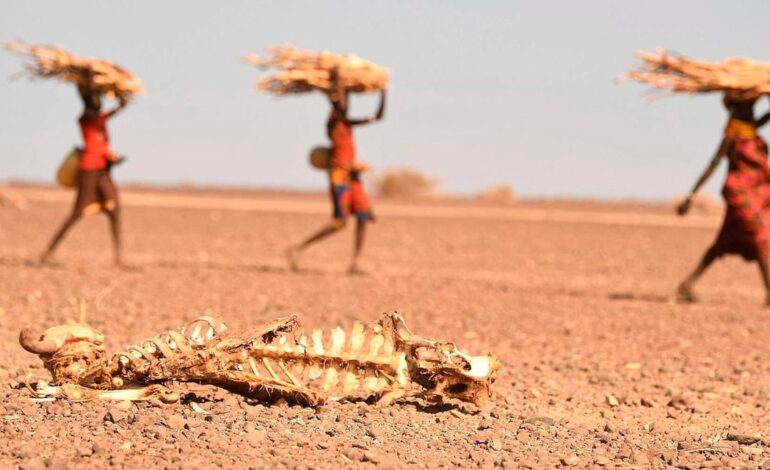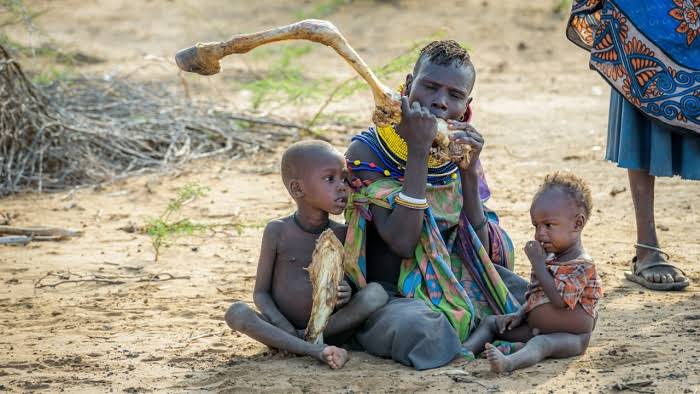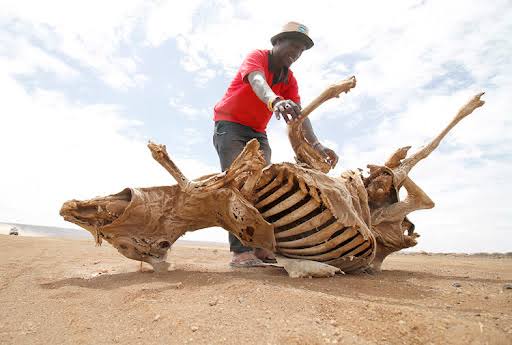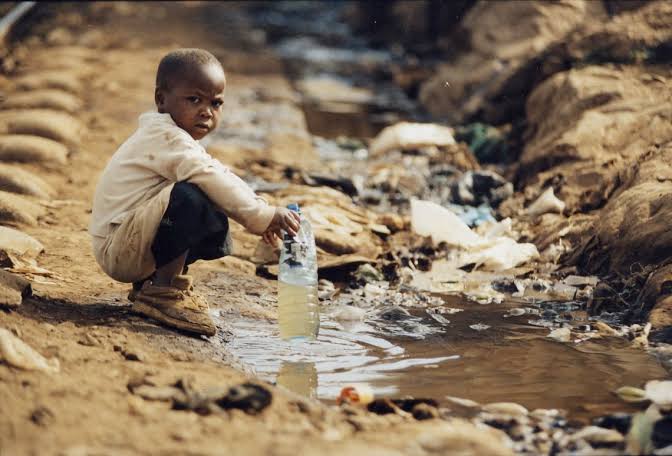
Faith Nyasuguta
The number of Kenyans affected by drought and hunger has shot from 4.2 million to six million, according to the latest report by Kenya Food Security Steering Group.
The report also notes that more than 970,000 children below the age of five and 142,000 pregnant and lactating mothers require urgent treatment for malnutrition, up from 884,000 as reported in July last year.
The jump in numbers follows the fifth consecutive season of poor rainfall, with the number of people requiring urgent humanitarian aid jumping to 4.4 million from 3.5 million, a clear show of the impact the drought has had on food security in the 23 arid and semi-arid land regions in the nation.

Last week, President William Ruto, called on well-wishers, the private sector and partners to support the government in building long-term resilience to drought while promising to spend the resources diligently.
“We are facing a devastating drought that has led to widespread distress and suffering. This crisis is worsening and requires urgent scale-up of interventions,” said the President in a tweet.
The steering group announced that it needs Sh15.35 billion (USD 121.9 million) to spend from March to May in drought response. The response involves enhancing food assistance through cash transfers, interventions on nutrition, water and livestock feeding, school feeding programmes and recovery of the agricultural sector from the drought.
Currently, Turkana, Marsabit, Mandera, Isiolo, Garissa, Baringo and Samburu counties are the most affected in the nation.
Turkana county, with a population of 1,022,773, leads with the highest number of its population in need of humanitarian assistance among other affected counties.

The ongoing food insecurity has been blamed on below-average crop production and deteriorating body conditions of livestock that have led to 2.6 million deaths and a loss of over Sh100 billion (USD 793 million). Drying up of more than half of water sources and insecurity sparked by banditry have also contributed to the crisis.
Even as the government plans to send food, scale up cash transfers and provide supplementary feeding to children in areas most affected, the nutrition situation is likely to worsen in the next three months as the drought persists.
“For the March-April-May weather outlook, the Meteorological Department has predicted normal to below-normal performance during that season.
There is a need therefore of close monitoring of implications on food and nutrition situations, especially in the Asals. Household milk availability will remain significantly low due to the unusually poor body condition of animals and low birth rate.
“Prevalence of acute malnutrition is likely to remain high in identified hotspots,” says the report.

In Kajiado County, near the capital, at least 400,000 families are facing starvation, according to the National Drought Management Authority. This is a sharp increase from the 110,000 households recorded last year.
Reports of scuffles and stampedes during the distribution of relief food have been reported, underscoring the magnitude of the problem.
Many residents have moved with their scanty herds to neighbouring counties such as Makueni, Kilifi and Narok.
The drought also exacerbated human-wildlife conflict in the country as wild animals roam villages in search of food and water.




